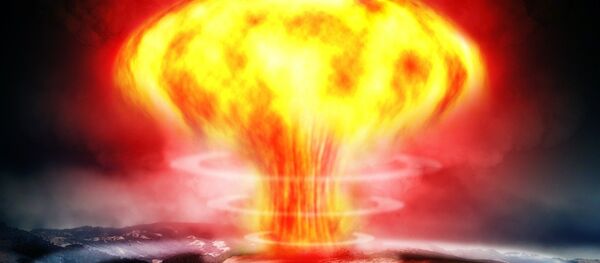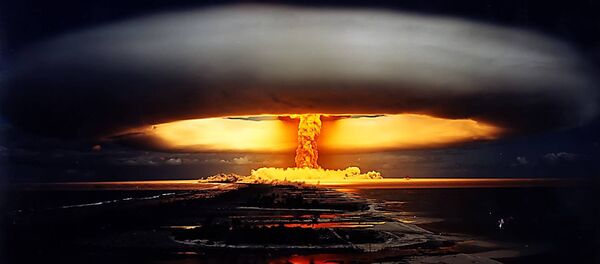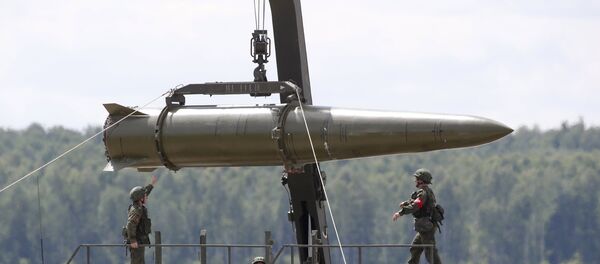The diplomat assured Russians, rather unconvincingly, that the US is just going to refurbish existing weapons, replacing old components with new ones, and that no qualitatively new bombs will take the place of the existing ones.
"There's nothing new here, there is no new quality or expansion, we're talking about the fact that components have been replaced and the service dates have expired," Fritsch stated.
According to the ambassador, the upgrade actually "serves the goals of upholding safety by supporting these weapons in a safe condition, and I think that's in everyone's interests."
Vladislav Belov, Director of the Center for German Studies at the European Institute of the Russian Academy of Sciences, reacted skeptically to the ambassador's comments.
"The task of the representative of the German foreign minister is to announce the official position of German officials on this manner. This position is that allegedly, nothing is happening." Unfortunately, in Belov's words, "the opinion of experts differs vastly from the position voiced by Fritsch."
A week earlier, Germany television ZDF television reported that the US is preparing to deploy its B61-12 bombs to German soil, citing US documents which showed that the bombs would soon be making their way to Germany.
"New, even more dangerous US nuclear weapons are expected to appear at Bushel. In the event of war, they will be delivered to their targets via German Tornado combat jets," Hitschler commented. Furthermore, he added that Germany itself also plans to spend 112 million euros on modernizing the air base.
It's a Matter of Trust
Numerous policy experts, politicians and social activists have already commented on the threat the new weapons will pose, from their enhanced potency to their potential to threaten the nuclear balance of power in Europe.
But whether or not the US's upgraded bombs are qualitatively new or not, it's worth pondering why American nuclear weapons are still even present in Europe, a quarter-century following the end of the Cold War.
According to Article 3 of the Treaty on the Final Settlement with Respect to Germany, entering into force on March 15, 1991, united Germany would renounce "the manufacture and possession of and control over nuclear, biological and chemical weapons."
And while the treaty did not explicitly state that Germany would become a nuclear weapon-free zone, in accordance with its spirit, it did result in the Soviets' decision to withdraw all their nuclear weapons and related materials from the former East Germany by June 1991, well ahead of their conventional forces' departure from the country in 1993.
The US, meanwhile, ultimately decided not to withdraw all its nuclear weapons, and an estimated 180 American nukes remain on European territory, many of them in Germany.
In the early 1980s, the US decision to deploy intermediate range nuclear weapons to Europe brought the two superpowers to the brink of nuclear war. Moscow was afraid that the US could use its cruise and Pershing II ballistic missiles to launch preemptive attacks on the Soviet Union, with missile flight times estimated at as little as five minutes.
Since then, the US and the Soviet Union signed the highly-praised Intermediate Nuclear Forces Treaty, which was later followed with the USSR withdrawing its conventional forces from Eastern Europe and even breaking apart altogether, with Russia and 14 other republics becoming its successors. With no more threats in Europe for the US to counter, logic would have suggested that Yankee, victorious, could finally go home.
But the US never left. From the late 1990s to the mid-2000s, despite repeated promises not to expand eastward from Germany, NATO, the US-led defense pact, crept ever-closer to Russia, ultimately coming to embrace all the former members of the Warsaw Pact, and even several republics of the former Soviet Union.
With the emergence of the crisis in Ukraine, NATO only expanded its activities in the east, deploying new task forces and building up weapons stockpiles, dramatically scaling up exercise activities on Russian borders, and even sending military trainers into Ukraine, ostensibly to train the Ukrainian military for Kiev's war against Donbass.
Given this history of events, it seems that whether or not the US's updated nuclear weapons for Germany are qualitatively new or not really is not the main issue. The point, rather, is that Russia has every reason to fear and fundamentally distrust all US military activity on the European continent, especially when it comes to the stationing highly destructive nuclear weaponry on European soil. After all, they've been lied to once or twice before.
Postscript
The B61-12 nuclear gravity bomb is believed to feature improved strike capability, including increased accuracy and combined strategic and tactical capabilities. The B61 is a variable yield device, blurring the lines between so-called tactical and strategic nuclear weapons. In other words, the power of the weapon can be adjusted for use as a small-scale battlefield nuke, or set to detonate at over 300 megatons.







